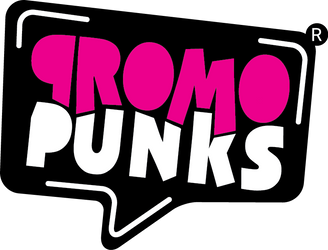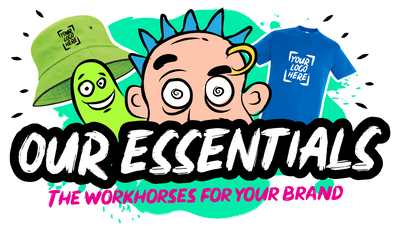
Episode #8: Five Genius Ways To Explode Your Event With Merch! 🎉 🎁
Promotional products have come a long way from cheap pens and forgettable tote bags. In today's competitive business environment, branded merchandise is one of the most powerful and underutilised marketing tools available. But here’s the catch — not all merch is created equal.
To create real impact, businesses must approach promotional products with the same strategic thinking they apply to digital ads, events, or product launches. The key? Knowing your audience, your environment, and how the product can continue the conversation long after the handover.
1. Understand Your Audience: The Foundation of Effective Merch
Promotional products only work if they’re actually relevant to the people receiving them. The first step in creating effective merch is to ask:
Who are we talking to, and what do they care about?
For example, if you're attending a tech conference, handing out heavy gift boxes makes zero sense. Attendees are walking around all day. Think light, practical, and tech-aligned: branded tote bags, wireless chargers, slim power banks, or cable organisers. These items not only offer immediate use but also long-term visibility and brand recall.
Takeaway: Audience relevance is non-negotiable. A practical, well-matched product is more likely to be used, shared, and remembered.
2. Context Is Everything: Match the Product to the Situation
Where and how you hand out your merch matters just as much as the item itself.
Let’s say you’re at a large expo. One smart tactic? Use a low-cost, high-sensory item to draw people in — like popcorn. A business that branded its popcorn bags with a QR code and paired it with a raffle for a major prize (like AirPods) created buzz across the entire exhibition floor. People followed the scent, scanned the QR code, and registered for the giveaway — providing valuable customer data in return.
Takeaway: Promotional products are more than objects — they’re moments. Match your merch to the environment and your campaign goals.
3. Scarcity Sells: Use Urgency to Drive Action
FOMO works. A store offering branded water bottles to the first 200 visitors didn’t just give away freebies — they created a reason to show up early and queue. The bottle wasn’t even part of their product line; it was an exclusive, limited-edition item. This helped preserve their product’s premium feel while still driving interest and foot traffic.
Takeaway: Use urgency to your advantage. Limited-edition merch creates buzz, boosts turnout, and encourages action.
4. Portability + Longevity = Maximum Exposure
One of the most overlooked aspects of promo products is carryability. If it doesn’t fit in a bag, on a wrist, or in a pocket, it’s probably going in the bin. The best products are those that are easy to carry and have lasting value — things your audience will use repeatedly.
Tote bags are the classic go-to because they work. They're walking billboards. Add something inside that aligns with your brand (and is actually useful) and you’ve got an item that’s both practical and promotional.
Other great options include:
- Reusable water bottles
- Phone accessories
- Mini first-aid kits
- Health or wellness items
- Sunscreen sachets or hydration packs
Takeaway: Give people something they’ll want to use today — and again tomorrow.
5. Track It or Toss It: How to Measure Merch ROI
Here’s the dirty secret of merch marketing: Most businesses don’t measure its effectiveness. That’s a missed opportunity.
By incorporating unique QR codes, short links, or even NFC tags into your products, you can directly track engagement. Whether it's a contest entry, an exclusive download, or a simple feedback form, smart merch should open the door to future interactions.
Better yet, collecting details (names, emails, preferences) via sign-up incentives means you’re building a database for future campaigns.
Takeaway: Promotional products don’t have to be a black hole. Make them measurable and you’ll see the true ROI.
6. Brand Alignment Makes the Difference
Merch only works if it reflects your brand — both visually and emotionally. Whether you're a premium fashion label or a medical service provider, the product must reinforce your identity.
Examples:
- A luxury brand might use minimalist fans or elegant accessories during a summer activation.
- A medical service might offer branded skipping ropes, water bottles, or band-aid kits to promote healthy habits and raise awareness.
Takeaway: Make sure your merch looks and feels like you. Otherwise, it's just another throwaway item.
7. It’s Not About the Product. It’s About the Experience.
The best campaigns don’t start with “What should we print our logo on?” They start with “What experience do we want to create?”
Great promotional products:
- Start conversations
- Drive foot traffic
- Spark social media shares
- Educate or entertain
- Collect data
- Build loyalty
A branded item isn’t the end — it’s the beginning of a journey. When done well, it becomes a lasting touchpoint in a relationship with your brand.
Final Thought: Don’t Print It Unless It’s Smart
If you can’t answer who the product is for, why they’d care, or how you’ll measure its success — don’t print it.
But if you can?
Your promotional product won’t just sit on a desk or hide in a drawer.
It will move.
It will speak.
It will sell.





